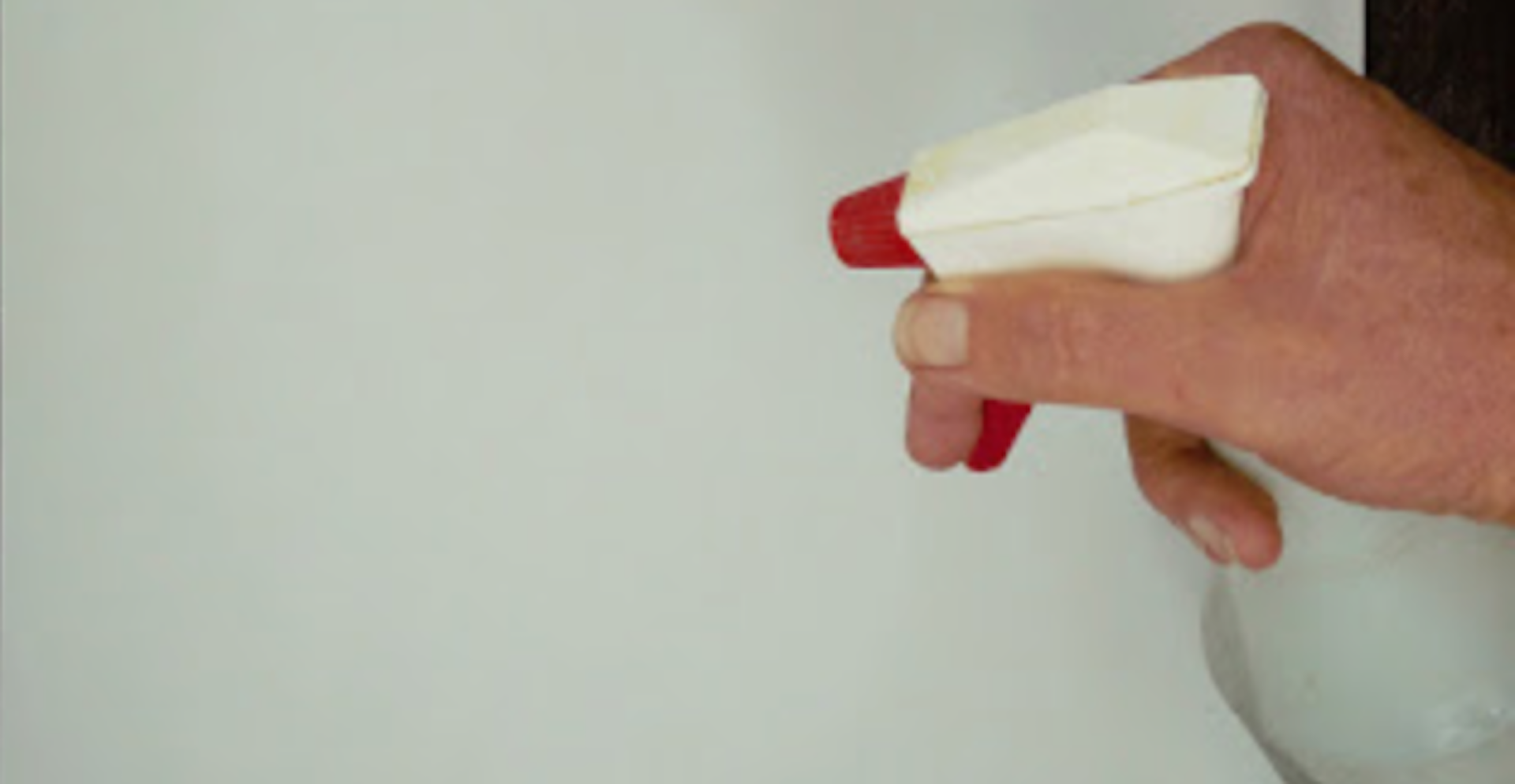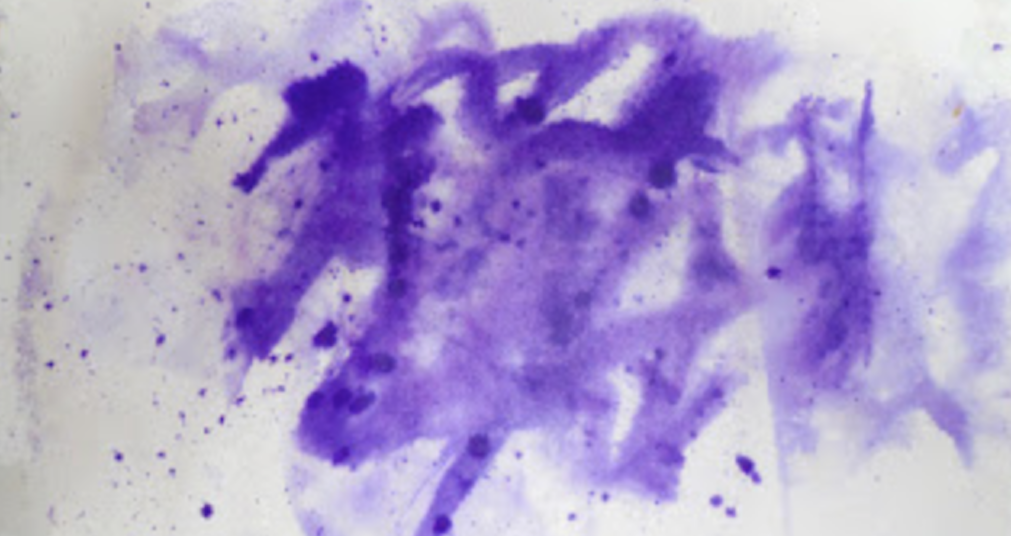Use Ink Blots To Get Art Students Out of a Drawing Rut
Creative people, like everyone else, get into mental ruts.
The way this happens might be described by comparing our mind to a smooth, rounded mound of dry earth. When a drop of water lands on top of the mound, it stands still for a few seconds before it manages to find a way to roll down, licking up some dust as it rolls.
The next drop lands and, having no other path to follow, slides down the path that was etched by the first drop and licks up a bit more dust. The next drop now has a clear path to follow and licks up more dust.

As drop after drop falls, each follows the same path, each licking up it’s own grains of dust, until finally a gully is formed, and it becomes impossible for a subsequent drop to find an alternative way down.
The way we go about our lives and our creative work can be similar. Once we have found a way to do something, we do it that way over and over until it becomes impossible to conceive of an alternative route.
Let’s say you’re an art student.
You are learning to draw a face. You’ve learned a few simple guidelines. You’ve learn a step-by-step process. Soon you can draw one face after another. But it doesn’t take long for them all to look similar. You are in a rut. You’ve practice the method you learned over and over, and you can only draw a face one way.

My theatrical design students have often had a similar problem. Once they have read a text, studied a character, and found a picture that seemed to satisfy the requirements for the character’s costume, their “mental mound” seems already to have gotten its rut. They create an interesting pose, and then draw the costume idea they had seen onto the figure. But they have a difficult time taking the next step and creating a design of their own.
When I get into visual ruts like these, I find a trick that I learned from the legendary designer Irene Corey to be really helpful. One of her many ways of helping an artist out of a rut was to use random ink blots.
Let’s suppose we are looking for a new way to draw a face.
Here’s how Corey’s mental trickery works.
Step one: Dampen some drawing paper. Spraying a mist over the paper is a quick way to get an even dampness without too many puddles.

Step two: Sprinkle or randomly brush some ink over the paper to create an inky, random “mess,” and let the paper dry.

Step three: Study the patterns in the ink blots to find a face. What happens is that you get a nice interface between what you think you want the face to look like (call it your mental-rut idea if you like), and what the ink blot imposes on you.

The result is that you force yourself to come up with a new idea. It may or may not be useful for the task at hand, but
The new image will definitely push you (and/or your students) out of your habitual approach.
The ink blot approach to drawing is also a great exercise for the beginning art student. Let students create their own ink blots, and then ask them to use the blots as the starting point for a drawing.
It’s a bit like imagining what images you see in a puffy passing cloud, only this time you get to DRAW what your imagination finds in the cloudy, inky pattern. This can be a particularly freeing exercise for the students who seem limited by the need to “get it right” when they draw.
Another way to to get students started in art is to get a free art lesson that encourages kids to experiment with new visual ideas.
Get started with a free art lesson here.
Creative people, like everyone else, get into mental ruts.
The way this happens might be described by comparing our mind to a smooth, rounded mound of dry earth. When a drop of water lands on top of the mound, it stands still for a few seconds before it manages to find a way to roll down, licking up some dust as it rolls.
The next drop lands and, having no other path to follow, slides down the path that was etched by the first drop and licks up a bit more dust. The next drop now has a clear path to follow and licks up more dust.

As drop after drop falls, each follows the same path, each licking up it’s own grains of dust, until finally a gully is formed, and it becomes impossible for a subsequent drop to find an alternative way down.
The way we go about our lives and our creative work can be similar. Once we have found a way to do something, we do it that way over and over until it becomes impossible to conceive of an alternative route.
Let’s say you’re an art student.
You are learning to draw a face. You’ve learned a few simple guidelines. You’ve learn a step-by-step process. Soon you can draw one face after another. But it doesn’t take long for them all to look similar. You are in a rut. You’ve practice the method you learned over and over, and you can only draw a face one way.

My theatrical design students have often had a similar problem. Once they have read a text, studied a character, and found a picture that seemed to satisfy the requirements for the character’s costume, their “mental mound” seems already to have gotten its rut. They create an interesting pose, and then draw the costume idea they had seen onto the figure. But they have a difficult time taking the next step and creating a design of their own.
When I get into visual ruts like these, I find a trick that I learned from the legendary designer Irene Corey to be really helpful. One of her many ways of helping an artist out of a rut was to use random ink blots.
Let’s suppose we are looking for a new way to draw a face.
Here’s how Corey’s mental trickery works.
Step one: Dampen some drawing paper. Spraying a mist over the paper is a quick way to get an even dampness without too many puddles.

Step two: Sprinkle or randomly brush some ink over the paper to create an inky, random “mess,” and let the paper dry.

Step three: Study the patterns in the ink blots to find a face. What happens is that you get a nice interface between what you think you want the face to look like (call it your mental-rut idea if you like), and what the ink blot imposes on you.

The result is that you force yourself to come up with a new idea. It may or may not be useful for the task at hand, but
The new image will definitely push you (and/or your students) out of your habitual approach.
The ink blot approach to drawing is also a great exercise for the beginning art student. Let students create their own ink blots, and then ask them to use the blots as the starting point for a drawing.
It’s a bit like imagining what images you see in a puffy passing cloud, only this time you get to DRAW what your imagination finds in the cloudy, inky pattern. This can be a particularly freeing exercise for the students who seem limited by the need to “get it right” when they draw.
Another way to to get students started in art is to get a free art lesson that encourages kids to experiment with new visual ideas.
Get started with a free art lesson here.
Creative people, like everyone else, get into mental ruts.
The way this happens might be described by comparing our mind to a smooth, rounded mound of dry earth. When a drop of water lands on top of the mound, it stands still for a few seconds before it manages to find a way to roll down, licking up some dust as it rolls.
The next drop lands and, having no other path to follow, slides down the path that was etched by the first drop and licks up a bit more dust. The next drop now has a clear path to follow and licks up more dust.

As drop after drop falls, each follows the same path, each licking up it’s own grains of dust, until finally a gully is formed, and it becomes impossible for a subsequent drop to find an alternative way down.
The way we go about our lives and our creative work can be similar. Once we have found a way to do something, we do it that way over and over until it becomes impossible to conceive of an alternative route.
Let’s say you’re an art student.
You are learning to draw a face. You’ve learned a few simple guidelines. You’ve learn a step-by-step process. Soon you can draw one face after another. But it doesn’t take long for them all to look similar. You are in a rut. You’ve practice the method you learned over and over, and you can only draw a face one way.

My theatrical design students have often had a similar problem. Once they have read a text, studied a character, and found a picture that seemed to satisfy the requirements for the character’s costume, their “mental mound” seems already to have gotten its rut. They create an interesting pose, and then draw the costume idea they had seen onto the figure. But they have a difficult time taking the next step and creating a design of their own.
When I get into visual ruts like these, I find a trick that I learned from the legendary designer Irene Corey to be really helpful. One of her many ways of helping an artist out of a rut was to use random ink blots.
Let’s suppose we are looking for a new way to draw a face.
Here’s how Corey’s mental trickery works.
Step one: Dampen some drawing paper. Spraying a mist over the paper is a quick way to get an even dampness without too many puddles.

Step two: Sprinkle or randomly brush some ink over the paper to create an inky, random “mess,” and let the paper dry.

Step three: Study the patterns in the ink blots to find a face. What happens is that you get a nice interface between what you think you want the face to look like (call it your mental-rut idea if you like), and what the ink blot imposes on you.

The result is that you force yourself to come up with a new idea. It may or may not be useful for the task at hand, but
The new image will definitely push you (and/or your students) out of your habitual approach.
The ink blot approach to drawing is also a great exercise for the beginning art student. Let students create their own ink blots, and then ask them to use the blots as the starting point for a drawing.
It’s a bit like imagining what images you see in a puffy passing cloud, only this time you get to DRAW what your imagination finds in the cloudy, inky pattern. This can be a particularly freeing exercise for the students who seem limited by the need to “get it right” when they draw.
Another way to to get students started in art is to get a free art lesson that encourages kids to experiment with new visual ideas.
Get started with a free art lesson here.






